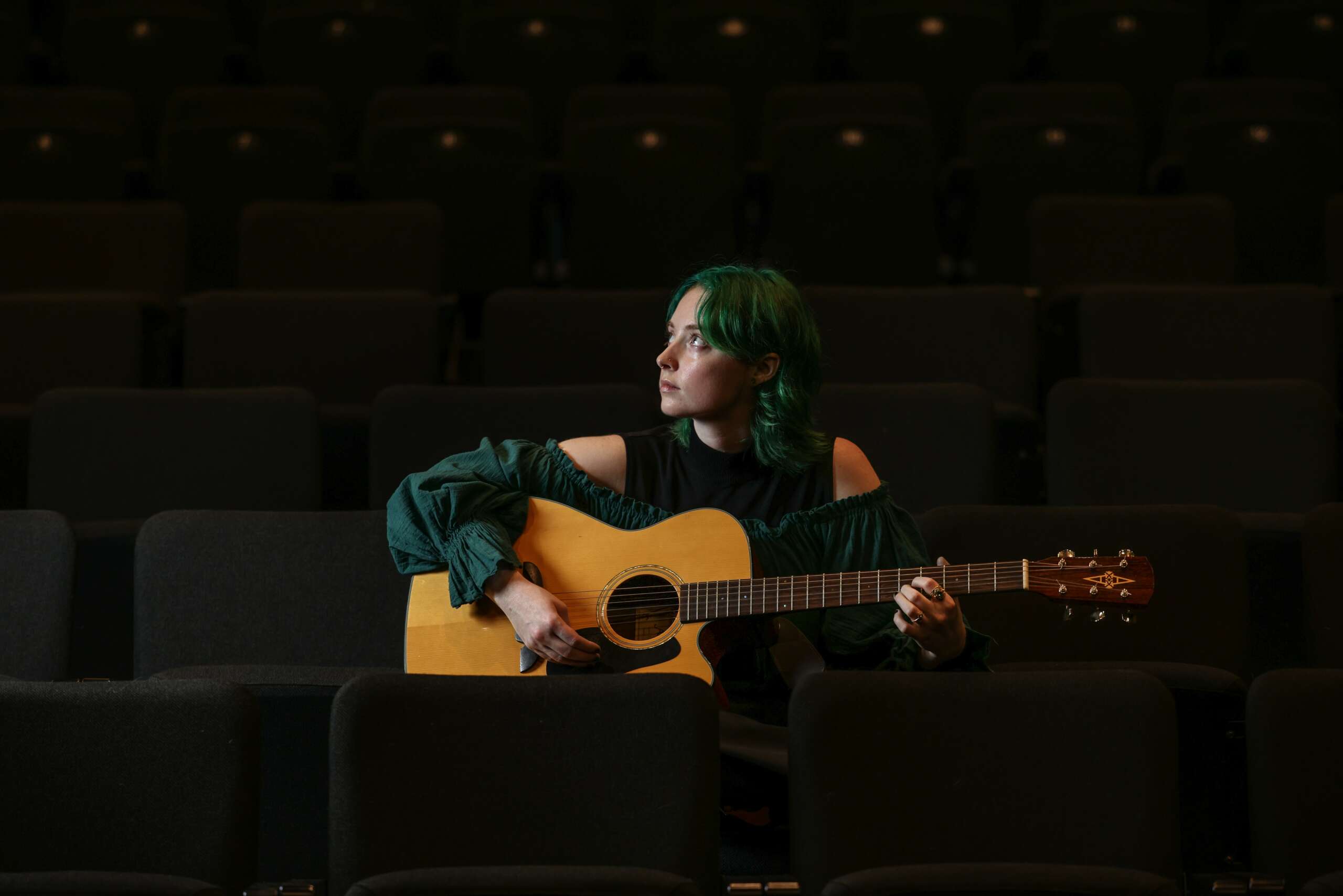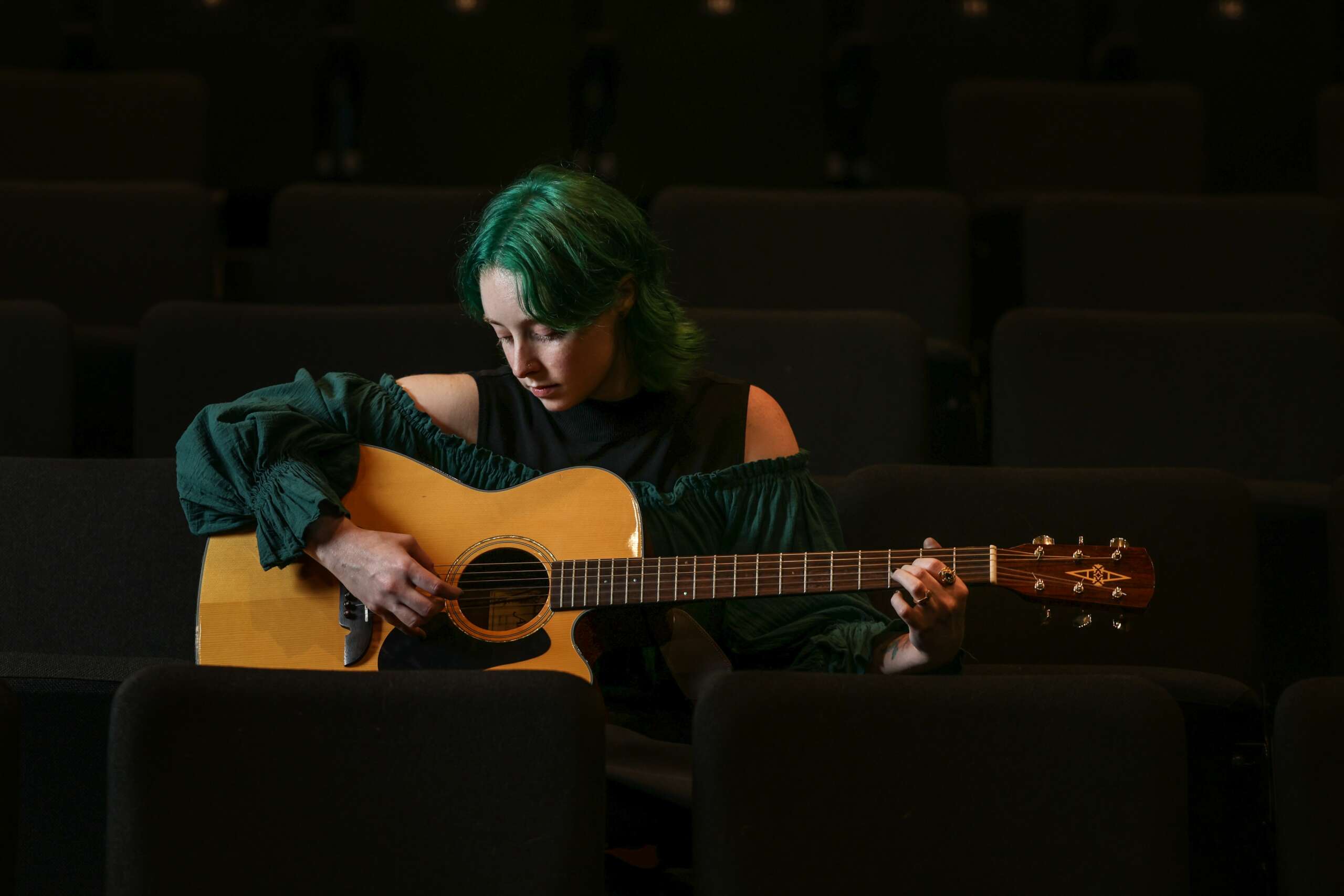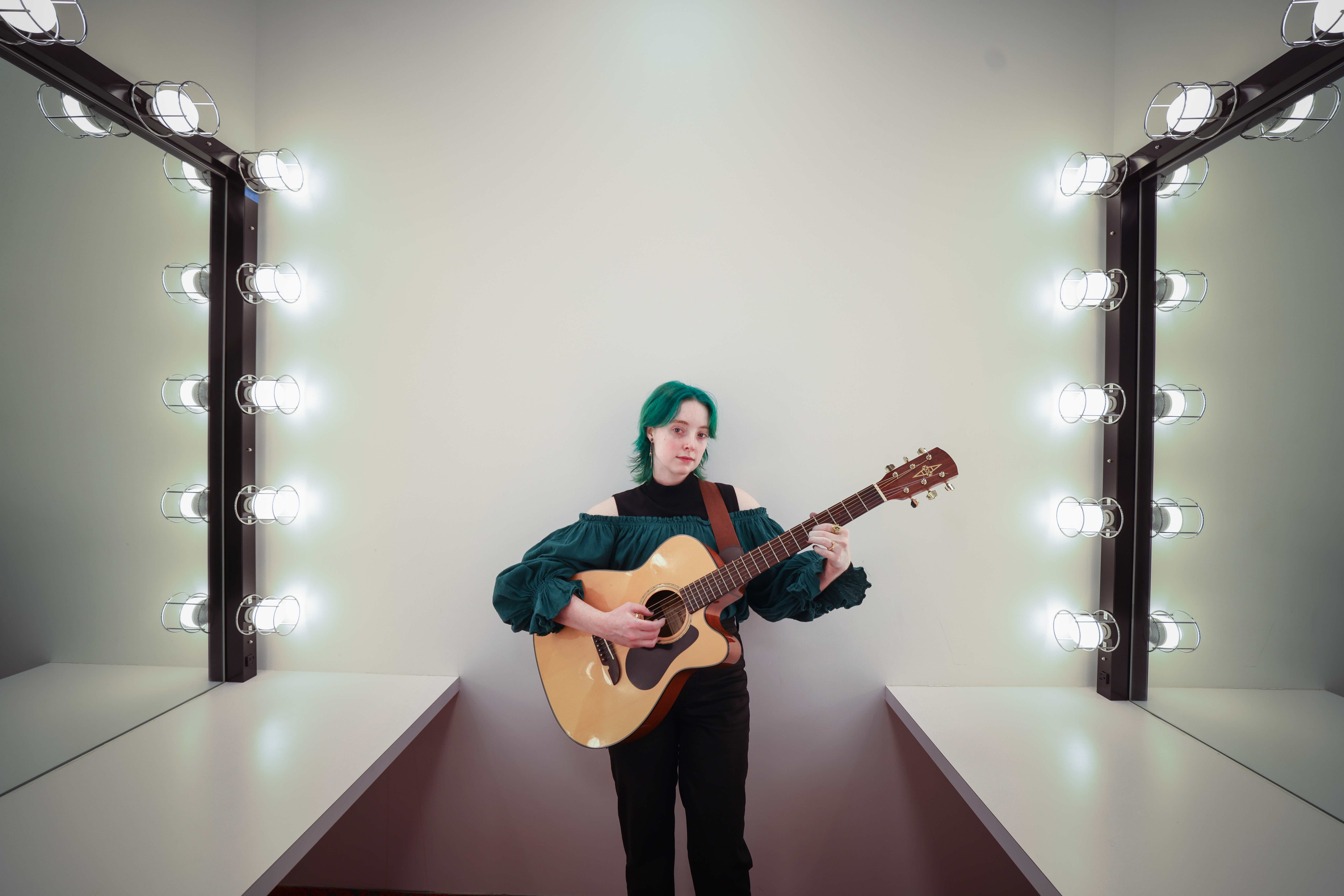We’re excited to introduce you to the always interesting and insightful Sherrod Foster. We hope you’ll enjoy our conversation with Sherrod below.
Sherrod, thanks for taking the time to share your stories with us today Has your work ever been misunderstood or mischaracterized?
An artist of any kind, and especially a performing artist, has to accept a level of visibility and the vulnerability that comes with it. To be perceived and have your art consumed is to allow the observer to interpret you as well as your work, and that perception and interpretation is inherently out of your control.
As a queer non-binary artist practicing in the southern US, this is magnified for me regarding both my art and my identity. People make assumptions based on their own preconceptions of art and gender, and it’s difficult to challenge those long-held beliefs. Even if I correct someone regarding my pronouns, that alone doesn’t educate them on the nuances of gender as a social construct, the rich global history of diverse pre-colonial gender spectra, the lack of strict binaries in biology and nature, or the intrinsic politics of queerness. These aren’t conversations that can be condensed into a thirty second interaction before or after a show or a quick mention in between songs. Even if these ideas could be condensed this way without doing them a grave disservice, so much of planting any idea depends on the receptivity of the soil it falls on. Part of being in the public eye for me is understanding that I will be misgendered, mischaracterized, and misunderstood. I have come to the decision that my responsibility is not to educate everyone I meet on gender and cis and heteronormativity, especially with the relative size of my platform, but to simply exist in these spaces as myself and further normalize that presence in these overwhelmingly cis male-dominated industries and environments.

Great, appreciate you sharing that with us. Before we ask you to share more of your insights, can you take a moment to introduce yourself and how you got to where you are today to our readers.
I call the music I make “recurring dream folk.” “Dream folk” from my blend of folk influences and production similar to the atmosphere-prioritizing style of dream pop. I add “recurring” for my introspective lyrical themes, use of meditative repetition, and live looping. Like the music I seek out to consume, I want my music and performances to create ethereal, ephemeral containers for the listener to observe their own internal experience. I’ve also been told it’s good for falling asleep.
I’ve been a songwriter as long as I can remember, but am only just starting out in the performance and production sides of the craft. This has opened up opportunities for me to further explore my work’s themes of nature and the unconscious by incorporating layered soundscapes and audio and visual elements from nature. I’m always seeking to create lush and verdant environments for self-reflection both in my recorded music and in my live shows.

Learning and unlearning are both critical parts of growth – can you share a story of a time when you had to unlearn a lesson?
I learned early that there would always be someone more successful, more connected, more talented, with better branding, and that in many ways life was a zero-sum game. I spent a long time culling my desire to pursue music publicly because of the attitude that since I wasn’t rich and connected it wasn’t worth starting. The idea of already feeling this way as a teenager would be funny if it wasn’t so indicative of something widespread. Non-men in music and performance spaces are so often given an expiration date, told (both explicitly and implicitly) that if they haven’t already “made it” once they start showing signs of age, their value as an artist dissolves.
I had a lot of internalized fear, criticism, and “it’s-no-use-”fulness to fight through before I could share anything so personal as my music publicly, but ultimately the risk of being perceived has been worth the joy of creating and sharing art. I still struggle with that self sabotage swirling and combining with the creeping nihilism that often comes with being raised in a city like Memphis and a country like the United States with such a heavy history influencing all facets of the present. As much as I can though, I’ve tried to come to a place of optimistic nihilism. If my actions have such little impact on the world around me, why wouldn’t I take every step I can towards what I love and can’t live without? I’ve been very privileged to pursue my craft and be welcomed into collaborative musical relationships and communities once I let go of rigid expectations and started showing up for myself and allowing others to see and show up for me.

How can we best help foster a strong, supportive environment for artists and creatives?
Go to local shows! Especially with the exorbitant pricing and lack of availability of big name and big venue concert tickets, on top of issues with platforms like ticketmaster, there’s never been a better time to get engaged in your local music scene. Tickets start as low as $7 and rarely exceed $30, and there’s truly something for everyone. Whether you’re looking for more mainstream or underground genres, production value and atmosphere, or the collective effervescence of singing with a crowd, there’s definitely something for you to love about your local scene.
Find out what bars and venues host shows in your area, go to their instagram or facebook events page, and start looking for your next outing. Going to shows exposes you to so many wonderful artists you would never have found through your spotify or instagram algorithm. And once you’ve found your new favorite band or artist at a local show, buy some merch, share their music with your friends, and bring them to the next one.

Contact Info:
- Website: www.fosterfallsmusic.com
- Instagram: @fosterfalls
- Facebook: https://www.facebook.com/fosterfallsmusic
Image Credits
Photos by Jamie Harmon


